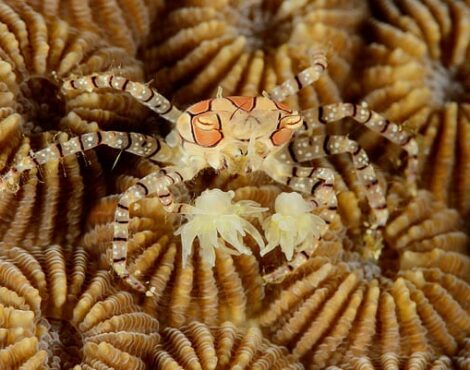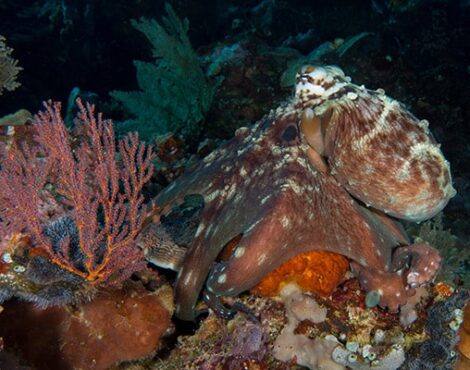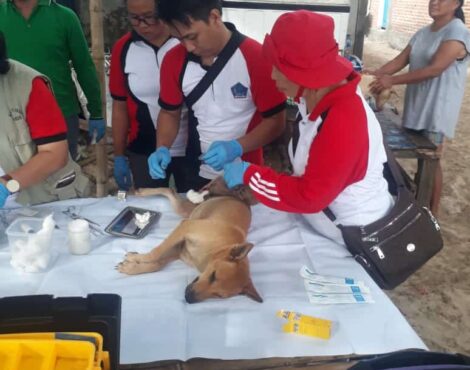A jewel of a find, when the mantle of a sea anemone sways with the movement of water, exposing for a brief second a very pretty, colourful tiny crustacean, causing excitement in even the most hardened diver or snorkeler.
Watching and waiting for the anemone to expose itâs treasure again, the brightly red and white coloured spotted crab comes into view waving itâs claws. On further inspection, the appendages are tipped with large feather like fans, scooping through the water catching prey.
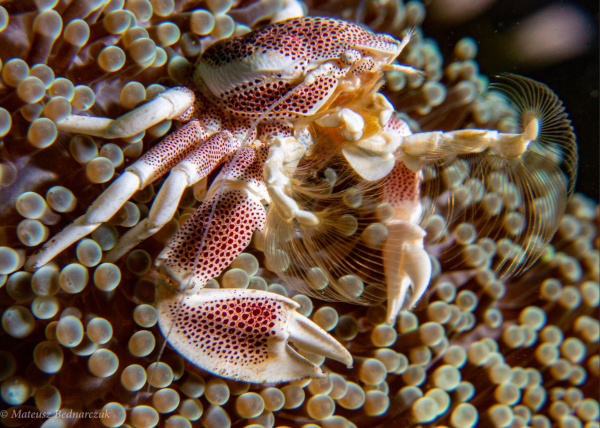
When scuba diving in Indonesia, especially when you dive Bunaken National Marine Park, porcelain crabs can be spotted on or under many of the anemones that are found on the reefs.
Siladen Resort and Spa, nominated the best dive resort in the world, is perfectly placed to experience the best diving in Indonesia where there is an abundance of beautiful anemones which are home to these charismatic little critters.
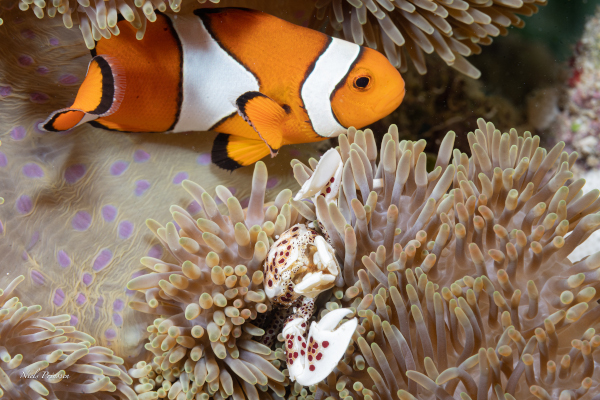
What is a Porcelain Anemone Crab?
Neopetrolisthes maculatus is also known as a spotted porcelain crab because of the multitude of red spots covering itâs mainly white body. Although they look like crabs, they are actually more closely related to hermit crabs and squat lobsters.
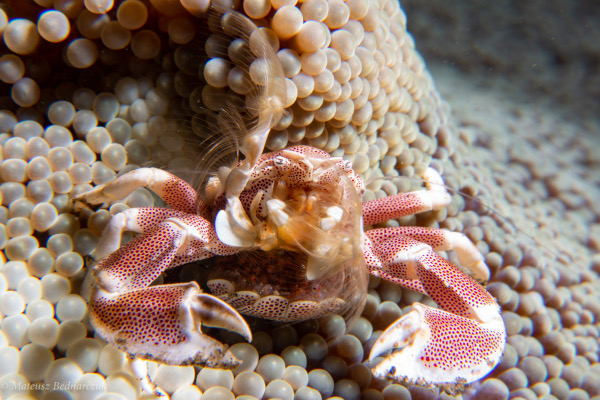
Their bodies are slightly elongated and flattened compared to normal crabs. They have two flat proportionally large claws which are only used for protection and fighting territorial battles, not for catching food.
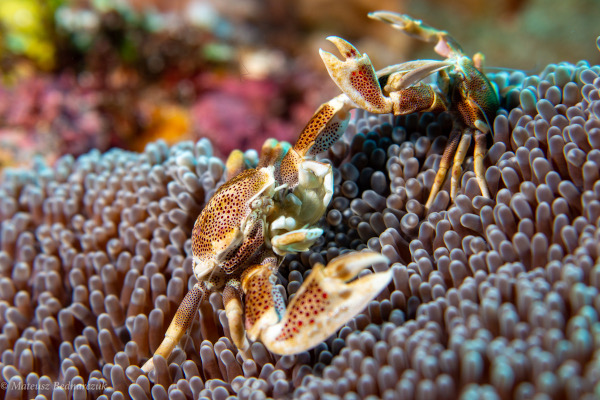
Unlike real crabs, which have four legs, porcelain crabs have a very small reduced fourth leg and only three normal walking legs.
They grow up to a maximum of 5cm, with the males being larger than the females.
Why is it named âPorcelainâ?
There seems to be two theories for their name. The first is because they are extremely delicate. Appendages can be broken off easily or are shed when trying to escape a predator, but, remarkably they can regenerate them once they shed their shells.
The second theory is that the white edges of their shell is so fine it resembles porcelain.
After shedding their shells, their pattern is much brighter and prettier than before, as, over time, algae builds on the shell, dulling it.
Where do Porcelain crabs live?
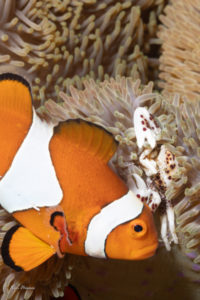 Â Porcelain crabs can be found living in the stinging tentacles, or under the mantle of some species of sea anemone, but most commonly carpet or adhesive anemones.
 Porcelain crabs can be found living in the stinging tentacles, or under the mantle of some species of sea anemone, but most commonly carpet or adhesive anemones.
Normally found in depths between 1-25m, the crabs live in commensalism with the anemone. Commensalism is where there is a relationship between the two species in which one species obtains food or other benefits, such as protection or shelter, from the other without either harming or benefiting the latter.
Porcelain crabs escape predators by hiding under the folds of the anemone.
Anemonefish also have a commensal relationship with anemones, and generally tolerate the crabs although they can get aggressive when tending to their eggs.
How Does a Porcelain Crab Feed?
Rather than catch their prey with their large claws like normal crabs, porcelain crabs are filter feeders. Their mouth parts have evolved into finely feathered fans. They reach out their filters, catching small pieces of debris and planktonic organisms, then retract them back towards their mouth.
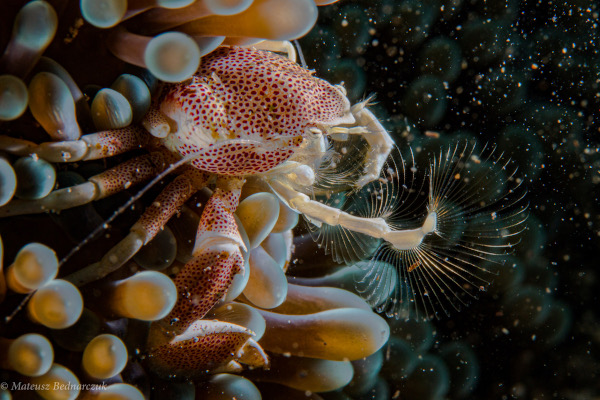
How Do Porcelain Crabs Reproduce?
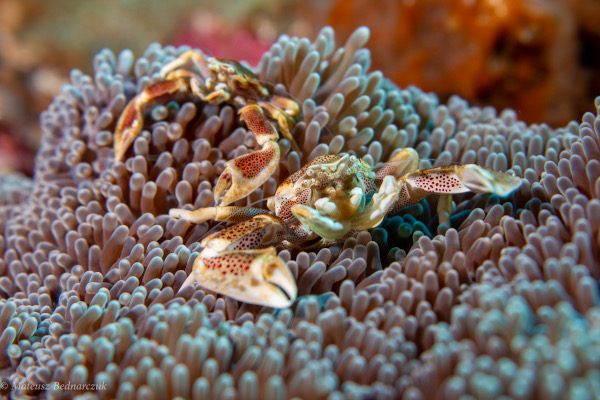
They usually live within a single anemone in pairs with the male being the larger of the couple. The female lays around 1600 eggs which the male fertilises. The female then carries the eggs in a special hinged carapace under her body for 4 weeks.
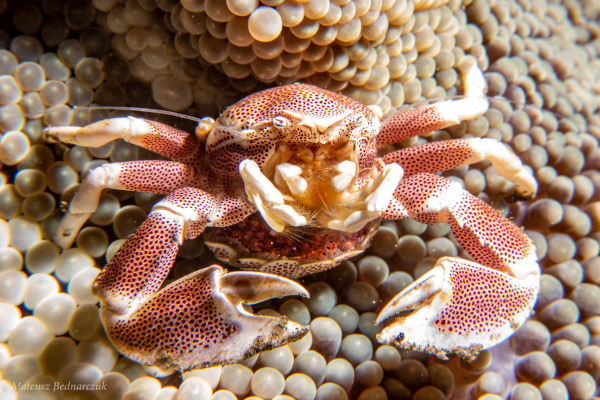
Once they hatch the larvae go through a planktonic stage before settling down and growing into their adult form.
How Do You Photograph Porcelain Crabs?
Porcelain crabs are a wonderful subject for underwater photography.
If you look carefully around the edges of the anemones you are likely to find at least one pair. They can be quite reclusive, often hiding at the sight of divers. If you are patient, they may eventually come out.
On a night dive you will see them more often in the tentacles of the anemone actively feeding and not so wary of divers or underwater photographers.
You will need a macro lens to photograph them, as they are very small. To capture them in sharp detail, make sure to select macro or close up focus, normally depicted by a flower sign
If you are shooting manually or on aperture priority, get the greatest depth of, you will need to select a small aperture (f11 on compacts, f22 on mirrorless or DLSR). If on manual, a slightly faster than normal shutter speed will allow you to capture the fast movement of their filters.
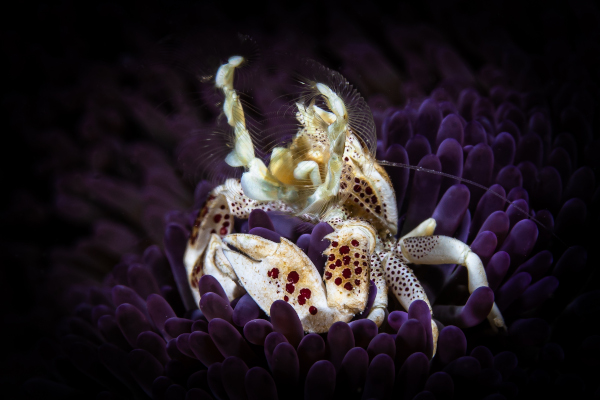
A metal stick or pointer can help you stay steady whilst you compose your image. For best compositional results try to photograph the crab straight on looking into its eyes, or from a 3/4th angle.
Want to learn more about UW Photography? Join Lisa Collins on her next workshop
Spotted Porcelain Crabs at Siladen Resort and Spa
There are a multitude of anemones close to the shore at Siladen Dive Resort and throughout the whole of Bunaken National Marine Park where porcelain crabs can be found relatively easily, whilst diving or snorkelling.
Just in front of the dive centre, an easy walking distance from their bungalow, snorkelers can easily admire a couple of them in a beautiful purple sea anemone living in the only 2m of water.
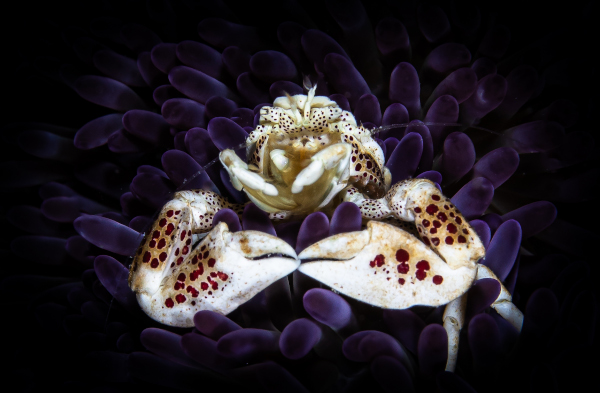
If you would like to observe the Anemone or Spotted Porcelain crabs yourself, please ask your guide.
Written by Lisa Collins
Photos by Mateusz Bednarczuk and Niels Prinssen


